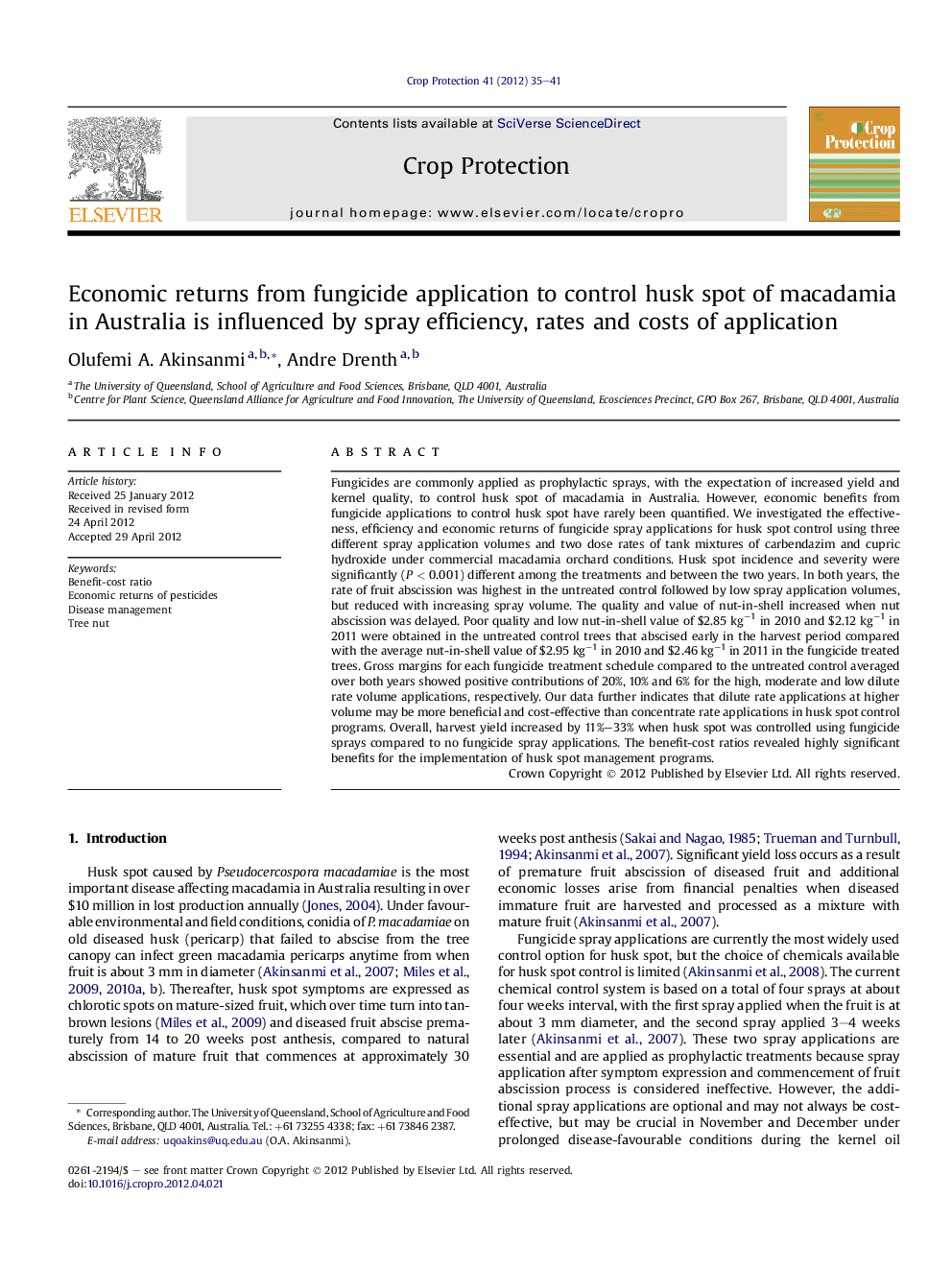| Article ID | Journal | Published Year | Pages | File Type |
|---|---|---|---|---|
| 4506212 | Crop Protection | 2012 | 7 Pages |
Fungicides are commonly applied as prophylactic sprays, with the expectation of increased yield and kernel quality, to control husk spot of macadamia in Australia. However, economic benefits from fungicide applications to control husk spot have rarely been quantified. We investigated the effectiveness, efficiency and economic returns of fungicide spray applications for husk spot control using three different spray application volumes and two dose rates of tank mixtures of carbendazim and cupric hydroxide under commercial macadamia orchard conditions. Husk spot incidence and severity were significantly (P < 0.001) different among the treatments and between the two years. In both years, the rate of fruit abscission was highest in the untreated control followed by low spray application volumes, but reduced with increasing spray volume. The quality and value of nut-in-shell increased when nut abscission was delayed. Poor quality and low nut-in-shell value of $2.85 kg−1 in 2010 and $2.12 kg−1 in 2011 were obtained in the untreated control trees that abscised early in the harvest period compared with the average nut-in-shell value of $2.95 kg−1 in 2010 and $2.46 kg−1 in 2011 in the fungicide treated trees. Gross margins for each fungicide treatment schedule compared to the untreated control averaged over both years showed positive contributions of 20%, 10% and 6% for the high, moderate and low dilute rate volume applications, respectively. Our data further indicates that dilute rate applications at higher volume may be more beneficial and cost-effective than concentrate rate applications in husk spot control programs. Overall, harvest yield increased by 11%–33% when husk spot was controlled using fungicide sprays compared to no fungicide spray applications. The benefit-cost ratios revealed highly significant benefits for the implementation of husk spot management programs.
► Prophylactic fungicide sprays against husk spot improved macadamia production. ► High volume sprays were better than low volume sprays to control husk spot. ► Gross margins of fungicide controls increased with spray efficiency. ► Fungicide control provided higher economic returns than untreated control. ► The benefit-cost ratio can act as basis for husk spot management decisions.
